
Do you know when you should visit Machu Picchu?. The world’s most visited destination in South America is undoubtedly the mysterious and sacred citadel of Machu Picchu. This world wonder was built in the 15th century by the great Inca emperor Pachacuteq, who designed a very symbolic place far from the big cities of the Andes. It is believed that this Inca citadel was abandoned when the Spanish arrived in Peru. And it was not until 1911 that the first photographs of this impressive ancestral construction were published.
Every year more than two million visitors come to visit Machu Picchu, but not all of them manage to have the most beautiful photos that are circulating on Instagram or social networks, the answer is that this Inca citadel is located in a capricious geographic system where they combine the mountains of the andes and the thick jungle. So no matter what time of year you travel, Machu Picchu always dawns in the morning with some fog. Of course, the months that are not recommended are the summer season in the southern hemisphere, more precisely in the Andes, due to the anticilon winds from the Pacific, and the Andes, there are months of heavy rains (December, January, February and March). Andean Great Treks recommends visit Machu Picchu from April to November, when you will have skies with few clouds and sunny days.
The Inca citadel of Machu Picchu is located at more than 8,000 feet (2,440 meters above sea level), northwest of Cusco. In the heart of a cloud forest, surrounded by great mountains such as Yanantin and Pumasillo, which give a special microclimate to this part of the territory of Cusco. Machu Picchu presents climatic characteristics similar to a jungle area; hot and humid days, cool nights, spontaneous cloudiness and rain at any time of the day and year, with an average annual temperature of around 12 – 27 ºC (52 – 80 ºF). However, the weather of the Inca citadel can change at any time of the day, so it will be important to be prepared with appropriate clothing. Machu Picchu and Peru are not governed by the well-known world seasons, spring, summer, autumn and winter.
Instead, they present 3 special seasons during the year, the rainy, medium and dry seasons. In this way, in the winter months (June to September) while the Peruvian coasts receive cloudy and cold days, the Sierra and the Selva present sunny and warm days with clear skies (dry season). On the contrary, while the Sierra and the Selva present torrential rains and cloudy days, the coast presents sunny days, with cool breezes and clear skies.
It coincides with the peak tourist season, with more visitants than any part of the year. The middle of April, May, June, July, August, and September, are the months of this season. Clear and blue skies, sunny days, and warm temperatures are its characteristics with an average temperature between 32ºF (at night) to 77ºF (at noon) or from 0º – 25ºC. Therefore, you can find less availability of Machu Picchu tickets in this period. For thus remember, as soon as you buy tickets, will be much better. So the evenings will have chilly temperatures along the Peruvian Andes and the cloud forest. The cold morning temperatures are usually a surprise to trekkers on hikes like the Inca Trail Machu Picchu.
The dry season is the ideal time to visit Machu Picchu. Not only is there less chance of rainfall, but the temperatures are also more moderate. This makes it a great time to explore the ancient ruins and take in the stunning views. It is also the busiest time of year for tourism, so it is important to book your Machu Picchu tickets and accommodation in advance. Despite the crowds, the dry season is still the best time to see Machu Picchu. The Inca citadel is located in the Andes Mountains, and the weather can be unpredictable. Rain showers are common, even during the dry season. So, if you want to avoid getting caught in the rain, it’s best to visit during the dry season.
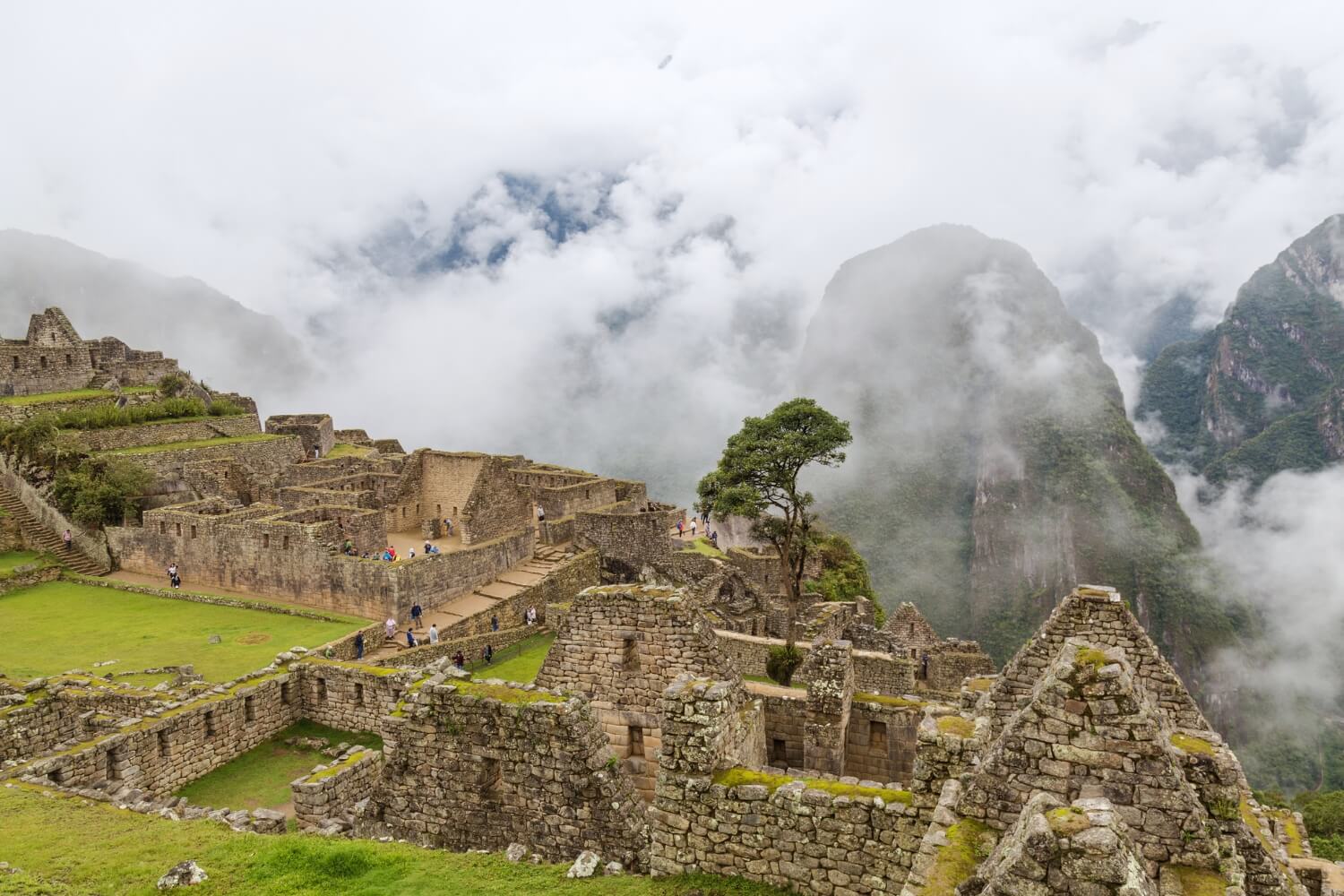
It coincides with summer in the rest of the world, from the end of November to the end of March. Machu Picchu is on the border of the jungle and the Sierra. And it presents rains (mostly in the early morning and late afternoon), cloudy skies all day with humidity, muddy roads and warm nights. The rainiest months are February and March, with an average temperature of 47º to 72ºF (7-22ºC).
As most will expect, the rainy season at Machu Picchu will coincide with the low tourist season. This highland rainy season will run from December to March, with some years ending earlier or extending by a few weeks. The most intense rainfall usually occurs between January and February, the second month of the year being generally the wettest. This highland season will also see warmer weather in the southern hemisphere. We are experiencing summer, after all. Look for warmer nights in this part of the world at this time.
Most people don’t really consider the rainy season as an option to visit Machu Picchu. The truth is that the rainy season does not mean that it rains all day like in other parts of the world. Most of the rainy season comes with scattered downpours. The rains are usually common in the morning and mid-afternoon hours. It can rain from 20 minutes to around a couple of hours. You will even get sun during this rainy season in Peru, usually after the morning rain. The rainy season will mainly refer to the gray clouds that we are subjected to for a few months and not anything related to heavy rain. The highest precipitation occurs occasionally, but is most likely between mid-January and late February.
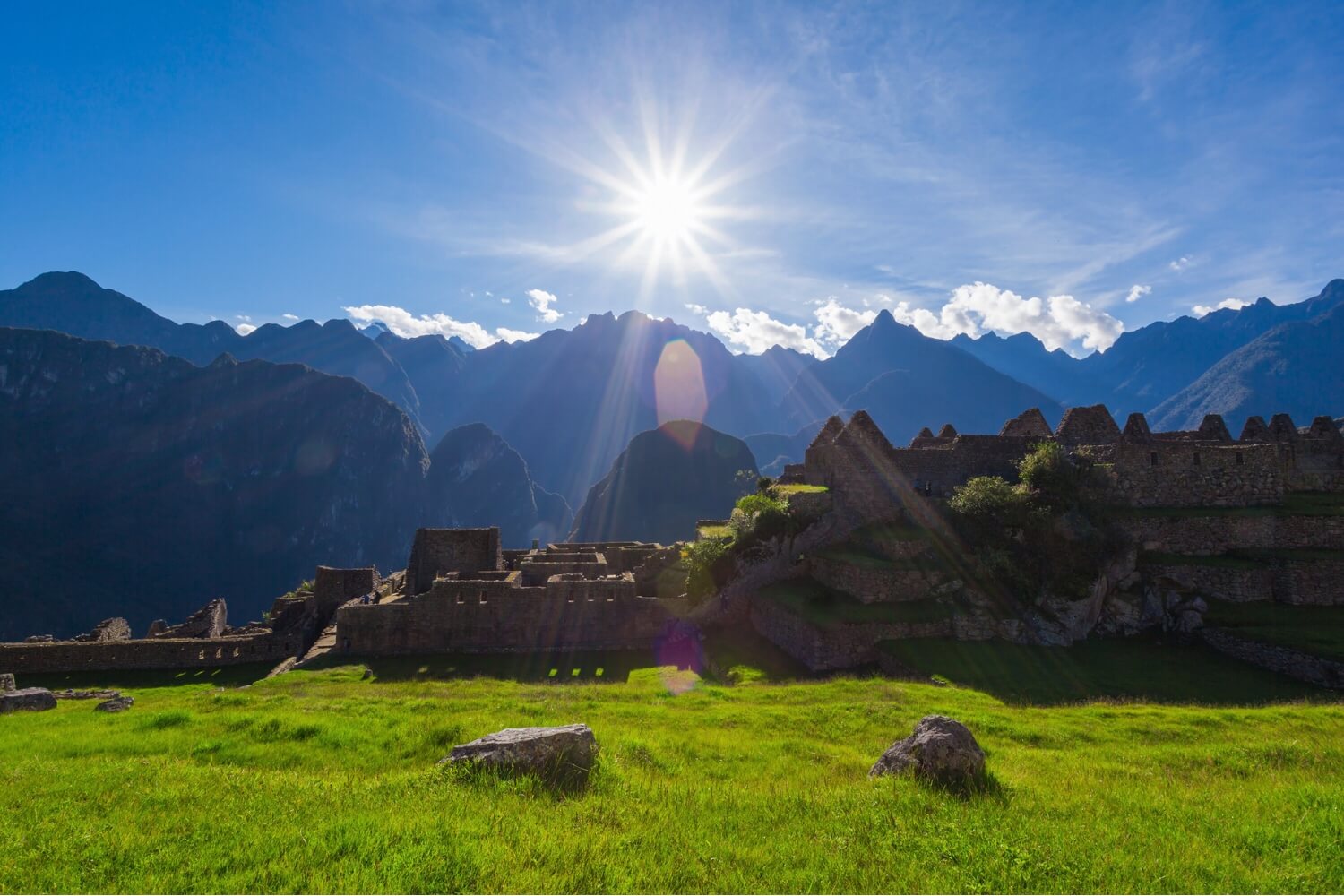
It covers the months of April, May, September, October and November. You will find occasional light showers, but not more than a rainy season because it is a transition period between the dry and rainy seasons. The advantage is fewer visitors than in high season and a temperate climate, not too cold or too hot but with clearer days and blue skies. In other words, a perfect combination between climate and public. If you are a person who is surprised by nature, you can consider the Middle Season as the best time to visit Machu Picchu. These “secondary seasons” basically carry a greater chance of rain than the dry season, but nothing more than a few showers here and there. So these seasons are basically what you would call “just a little rain” when there is some chance of precipitation.
Another major point in favor of visiting Machu Picchu during off-seasons is that fewer people are likely to attend the Inca citadel. If you want to travel in April, you will find a lush cloud forest because the rainy season has just ended, turning the surrounding landscapes very green. However, October and November will have a drier looking landscape (as dry as a rainforest can get) and slightly higher precipitation chances in the evenings.
The secondary months represent a good “in-between” time between the annual rains and the dry period. These months tend to have the least crowded Machu Picchu ruins, so they are definitely “dates” worth exploring.
Spring in Machu Picchu is from September to November and marks the time of year when the climate changes from the dry season to the beginning of the rainy season. September and October are good times to visit, whether visiting Machu Picchu by train, doing the day hike, or trekking the Inca Trail. In November, the weather starts to get cloudier and rainier, but it’s by no means a total washout. If it’s hiking, it’s best to travel a bit earlier, but for train visits, November is a reasonable time to go and is considerably less busy than some months.
Machu Picchu weather in spring
September is still in the dry season. October is when things start to change, but it’s still a pretty dry month. For November, the rains are more common. Typical daytime highs in October are around 21C/70F. At night temperatures drop to around 7C / 45 F.
The best things to do in Machu Picchu during spring
Before the rainy season arrives in November, September and October are ideal for doing the Inca Trail to Machu Picchu or one of the alternative treks in the area such as the Salkantay or Lares Trek. These are also good months to climb Huayna Picchu or Machu Picchu Mountain for spectacular views of the ruins. Traveling by train from Cusco to Machu Picchu in these months provides fascinating glimpses of the Sacred Valley along the way.

While December through February is slightly warmer at night than the rest of the year and is considered “summer,” this is also the wettest time at Machu Picchu, especially in January and February. Spending Christmas in Machu Picchu can be very pleasant. From January to April, the train to Machu Picchu leaves only from the Sacred Valley. What this means is that the part of the trip from Cusco to the Sacred Valley is done by road instead of rail. We do not recommend trekking in January or February and, in fact, the Inca Trail is closed for maintenance during the entire month of February. Other than Christmas, this is one of the quieter times to visit Machu Picchu.
Climate of Machu Picchu in the summer
Summer is the rainy season and January is usually the rainiest month of the year. Temperatures per day in January average around 20C/68F. Nights are around 8C/46F. The nature of the rainy season varies from year to year, and sometimes there are periods of good weather. As expected, the humidity is a bit higher this time of year, but not too intense.
The best things to do in Machu Picchu during the summer
Definitely consider spending the night in Aguas Calientes at this time of year. If you do encounter cloudy weather, take a walk to Los Jardines del Mandor, where a bit of rain or a cloud doesn’t really hinder exploration of the peaceful botanical garden and waterfall. If you are staying at Inkaterra Machu Picchu Pueblo, the Spectacled Bear Project is worth visiting any time of the year.
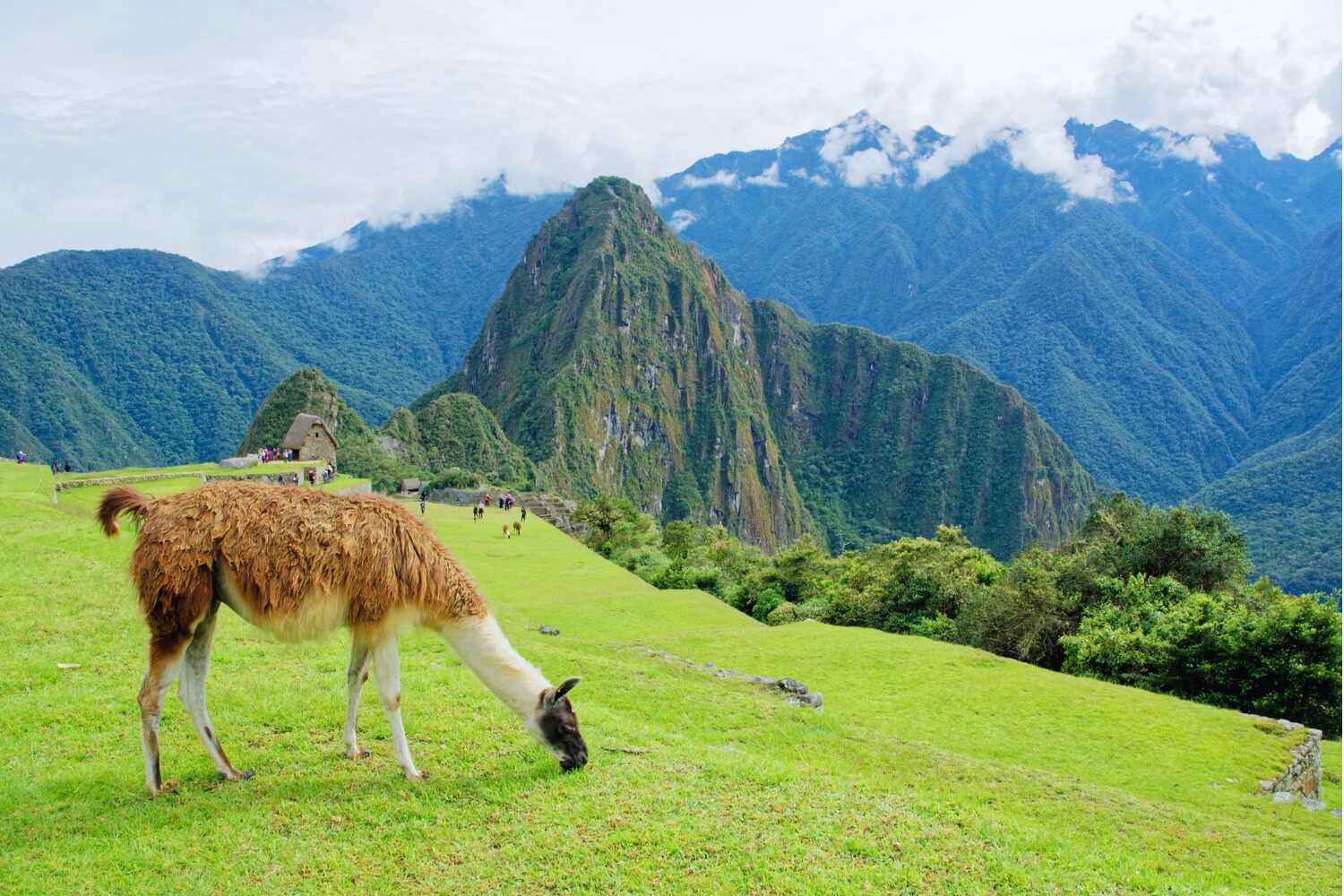
From March to May it is autumn in Machu Picchu and a time of change from the rainiest months to drier times. March is still quite wet, but mid-April is a good time to visit Machu Picchu. Beginning in May, trains to Machu Picchu travel from Cusco through the Sacred Valley to Aguas Calientes, at the base of the Inca citadel. These months are some of the best to visit and May in particular is hard to beat. Everywhere is especially green and fresh after the end of the rainy season.
Machu Picchu weather in autumn
March is still quite wet, although some travelers get lucky and experience great weather in March. Starting from April, the rainy season is definitely coming to an end and in May rain is rare. Average daytime temperatures in April are around 20C/68F and 6C/43F at night.
The best things to do in Machu Picchu during the fall
Mid-April marks the beginning of the best time to trek to Machu Picchu. The train ride is beautiful at this time and there are good chances of unobstructed views from the tops of Huayna Picchu and Machu Picchu mountains for the more active traveler.
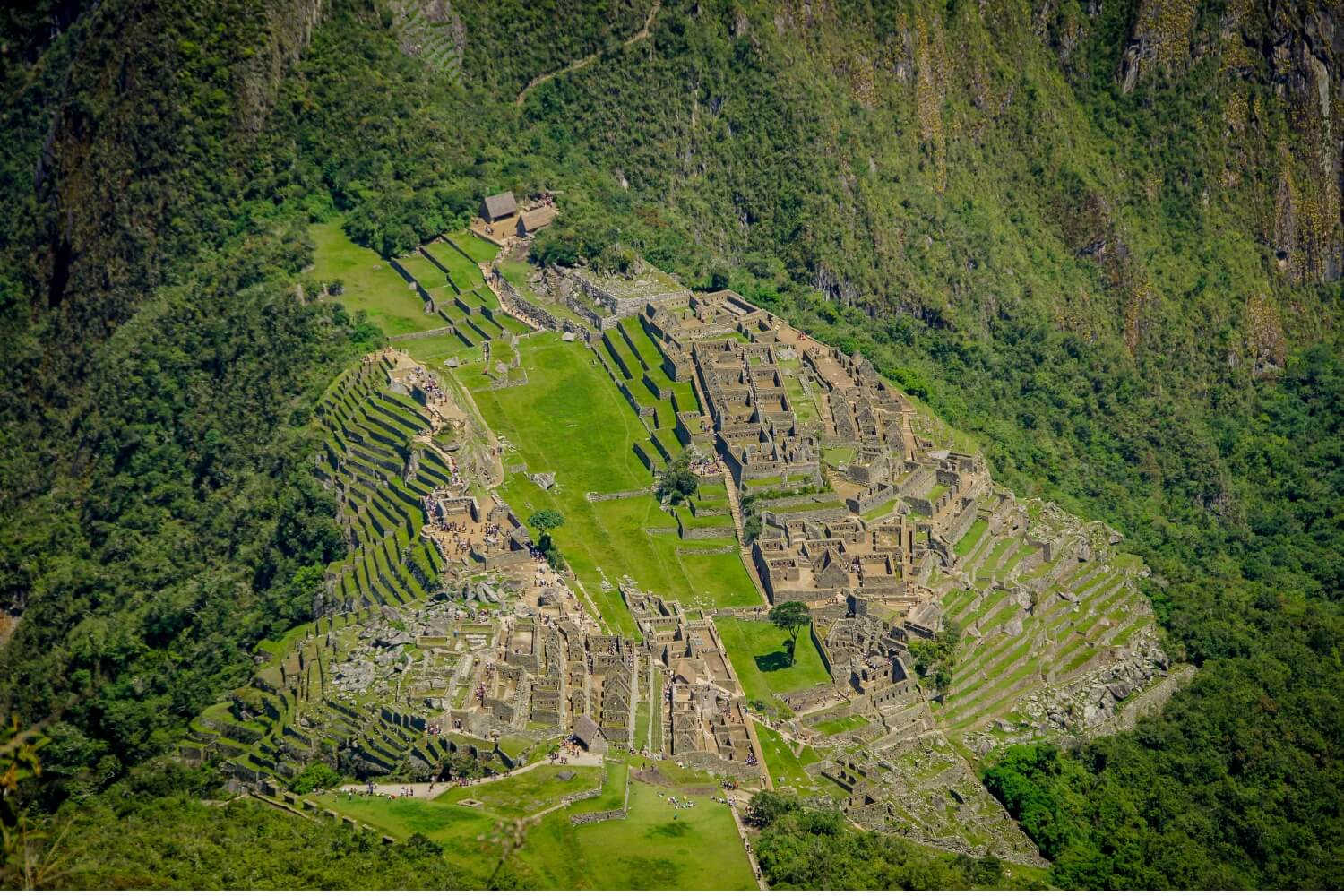
It really is hard to go wrong with a visit to Machu Picchu during the Peruvian winter: June, July and August. The weather is almost without exception excellent at this time. This is the best time for hikes and all kinds of outdoor adventures around Machu Picchu and Cusco. The downside is that July and August are very busy. June isn’t that busy, so it’s a great option. You need to book well in advance if you want to travel at this time, especially if you want to do any of the permit-requiring hikes that are sold only in limited numbers.
Climate of Machu Picchu in the winter
The three months are dry and almost always sunny. There is a chance of fog at times but it usually clears up. During the day the temperature rises to around 20C/68F in July and drops to around 1C/33F at night. In July there are usually only a couple of days a month without rain.
The best things to do in Machu Picchu during the winter
For photography, this has to be the best time to visit Machu Picchu. Trekking is great right now, but the trails are busier and it’s important to be prepared for cold nights. The Peruvian Andes as a whole are at their best in these months, so for an in-depth trip to Peru, this is one of the best times to visit. In June, a trip to Machu Picchu can be combined with the Inti Raymi Festival that takes place in Cusco, this is an Inca festival that honors the Sun God, Inti.
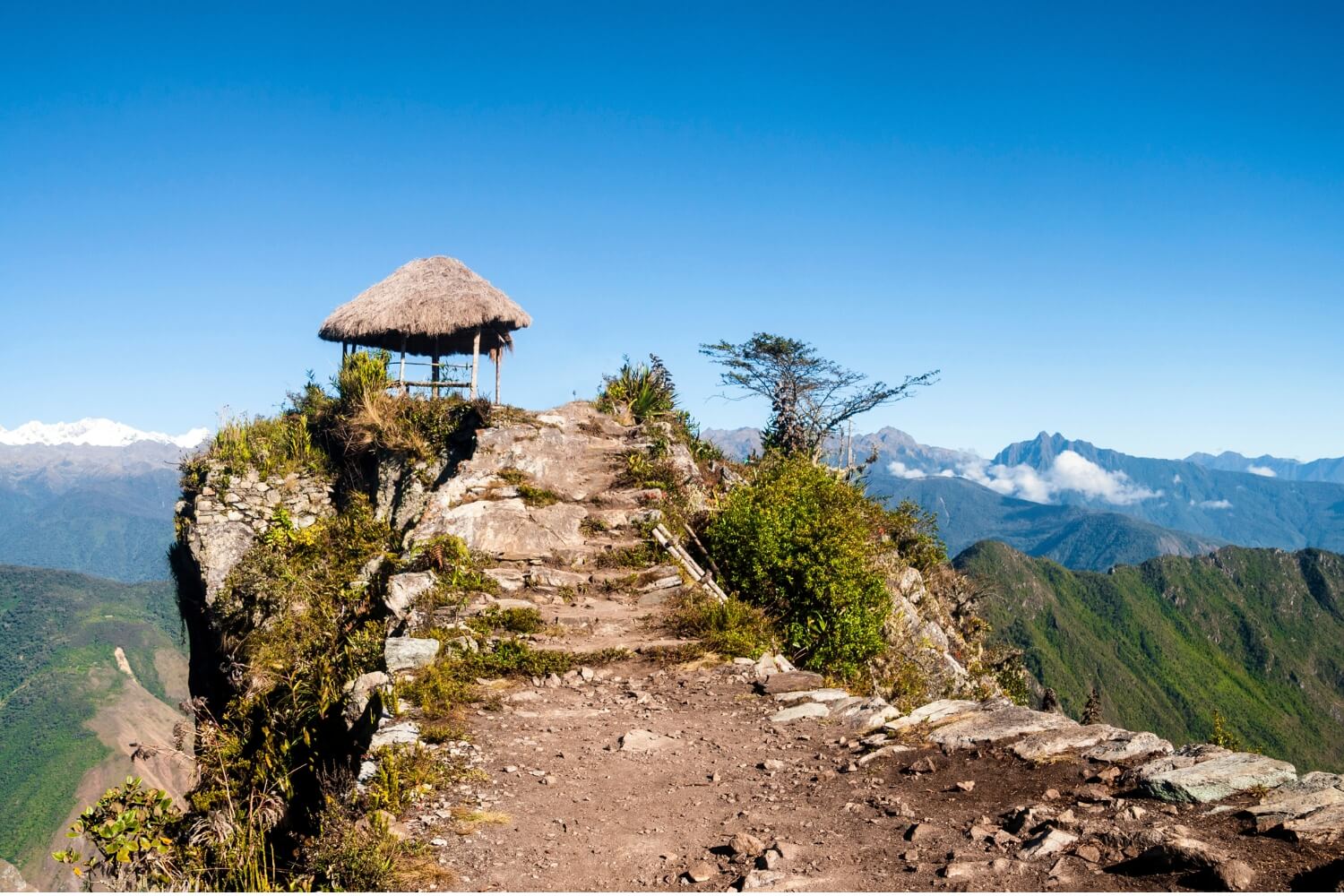
This is the rainiest month of the year, with warm days but cloudy skies and humid winds. Sudden itinerary changes, flight cancellations, train delays to/from Machu Picchu and trail closures may be some of the characteristics of January. Therefore, if you want to know the answer to What is Machu Picchu? January is a bad month to find out. On the other hand, you can find good deals on hotels, flights and tours for this month. The average temperature is 45 to 71ºF. As for the Inca Trail (Inca Trail) and alternative treks (Salkantay, Ausangate, Choquequirao) they usually present landslides, mud and blockages. Therefore, hiking or trekking is not recommended this month.
Temperatures at Machu Picchu during January generally range from a low of around 11°C (52°F) to a high of around 20°C (68°F), though it can feel cooler or warmer depending on humidity and the precipitation. Humidity levels can also be high, making the air feel muggy. The combination of high humidity and heavy rain can make hiking and exploring Machu Picchu more challenging, as the trails can become muddy and slippery. However, the rain also brings lush vegetation to the surrounding mountains and forests, creating a beautiful and serene atmosphere.
In short, expect rain almost every day. However, if you’re okay with the rain, the good news is that the tourist hordes are gone and you’ll have the place to yourself. You may find some solitude. Hopefully the weather cooperates, and you might even get a break in the rain and fog and be able to capture some amazing views (weather permitting) unobstructed.Average High Temperature – 24°C (75.2°F)
Average Low Temperature: 13°C (55.4°F)
Average Rainfall: 138mm (5.4″)
Average Rainfall Days: 15 days
Average Daylight: 12.8h
Average Sunshine: 5h
Average UV Index: 12
Average Wind Speed: 5.0 km/h
Average Humidity: 66%
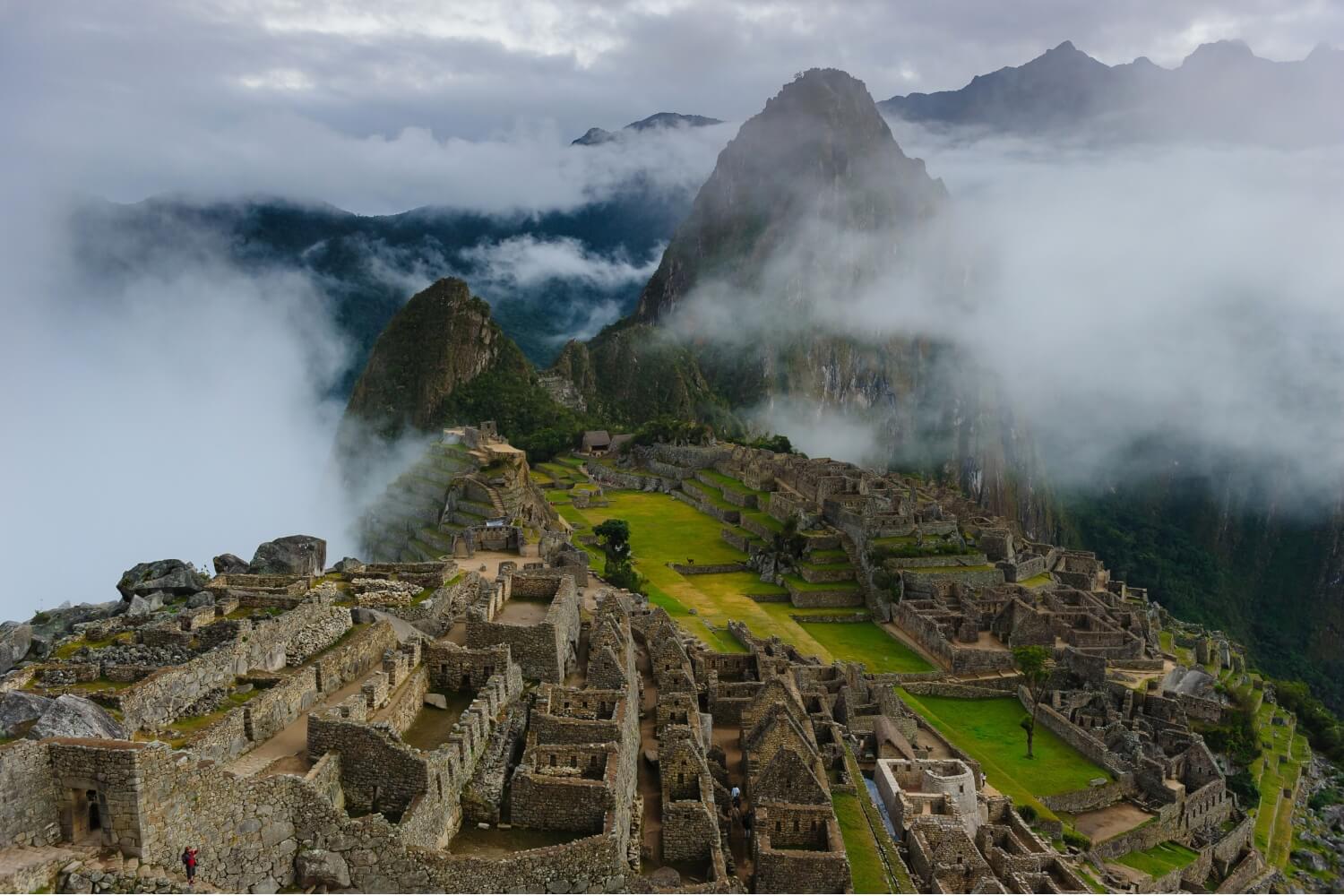
February is arguably the worst time of year to visit Machu Picchu, as large volumes of rain can flood the Urubamba River and trigger landslides along the mountainous terrain. In addition to the possibility of being stranded in the area, the popular Inca Trail is also closed during February to allow authorities time to clean up and repair the trail’s infrastructure.
Temperatures at Machu Picchu during February generally range from a low around 52 °F (11 °C) to a high around 70 °F (21 °C), though it can feel cooler or warmer depending on humidity and the precipitation. Humidity levels can also be high, making the air feel muggy. Despite the risk of rain, February can be a good time to visit Machu Picchu. The surrounding mountains and forests are lush and green, and there tend to be fewer crowds than during the peak tourist season of June through August.
If you plan to visit Machu Picchu in February, it is important to come prepared with waterproof clothing and sturdy walking shoes. It’s also a good idea to book your accommodation and tours in advance, as availability may be limited during this time.
Average high temperature: 25°C (77°)
Average Low Temperature: 13°C (55.4°F)
Average Precipitation: 141mm (5.6″)
Average rainy days: 20 days
Average daylight: 12.5h
Medium sun: 5h
Average UV Index: 12
Average humidity: 66%
March is still within the rainy season at Machu Picchu. However, the rain tends to lessen towards the end of March, and drier weather becomes more common in April. The last two weeks of March are a good time of year to book a trip to Machu Picchu if you want to avoid the crowds. that will come later in the year. While it will still be quite rainy, you will start to experience some clearer days, so this is a good time if you want to take the train from Cusco. Trekking is also possible during this time, since the Inca Trail will be reopened from the month before the restoration.
Temperatures at Machu Picchu during March typically range from a low around 52 °F (11 °C) to a high around 72 °F (22 °C), though it can feel cooler or warmer depending on the weather. humidity and precipitation. Humidity levels can also be high. March can be a good time to visit Machu Picchu, as the rainy season is coming to an end and the surrounding mountains and forests are still lush and green. Also, there tends to be fewer crowds than during the peak tourist season of June through August.
If you plan to visit Machu Picchu in March, it is important to come prepared with waterproof clothing and sturdy walking shoes, as there may still be occasional showers. However, you may also want to bring sunscreen and a hat, as the sun can be strong and the UV index can be high.
Average high temperature: 25 °C (77 °F)
Average Low Temperature: 13°C (55.4°F)
Average Precipitation: 151mm (5.9″)
Average rainy days: 13 days
Average daylight: 12.2h
Average sun: 6h
Average UV Index: 12
Average humidity: 66%
April might just be the best time of the year to visit Machu Picchu, as the combination of fewer crowds, warm weather, and less rain will produce some incredible conditions for exploring the famous Inca city. These factors also make April one of the best times to hike to Machu Picchu via the Inca Trail or any of the other mountain trekking routes. This is the last month before the crazy tourist season begins.
Machu Picchu in April will offer you a unique experience with its dry and temperate weather conditions, making it an ideal time to explore the Inca ruins and their surroundings. With the rainy season drawing to a close, you’ll be able to enjoy clearer skies, longer days, and stunning views of the surrounding Andes Mountains. The dry season also means that the trails and roads leading to Machu Picchu are generally easier to navigate, with fewer muddy or slippery areas. This makes the walking experience more comfortable and enjoyable.
During the day, temperatures at Machu Picchu can range from the mid-60s to mid-70s Fahrenheit (10 to 20 degrees Celsius). At night, temperatures can drop significantly, reaching 40 degrees Fahrenheit (around 7-8 degrees Celsius). In terms of crowds, April is considered a shoulder season, which means that while there will still be a lot of people heading to Machu Picchu, it is generally less crowded than the high season of June through August. This will allow you to explore the site more leisurely and enjoy the stunning views without feeling rushed.
One thing to keep in mind is that April is still a popular time to visit Machu Picchu, so it is important to plan ahead and book accommodation and tours well in advance. This will help ensure that you get the most out of your visit to this amazing site.
Average high temperature: 25°C (77°F)
Average minimum temperature: 12 °C (53.6 °F)
Average Precipitation: 62mm (2.4″)
Average rainy days: 9 days
Average daylight: 11.8h
Average sun: 7h
Average UV Index: 12
Average humidity: 63%
This month is characterized by the large influx of visitors that begins to arrive at Machu Picchu, mostly from the United States and Europe. In general, these days are warmer with blue skies and clear to have a great view of the citadel. If you’re looking to avoid the incessant rain, May is a great time to experience Machu Picchu. This month marks the start of the dry season; however, it also marks the time of year when tourists begin to flock to the Inca citadel to experience the history, culture, and stunning views of the surrounding Andes. You will likely need to book well in advance to secure trek permits for the Inca Trail in May, so alternative treks like Lares or Salkantay might be a better option.
May is still considered the end of the rainy season at Machu Picchu, and the weather is generally mild and pleasant during this time. However, there is a slightly higher chance of rain compared to the rest in the dry season. You can expect mostly clear skies and sunny days. It’s always a good idea to bring a waterproof jacket or poncho in case of a short afternoon shower. During the day, temperatures in May can range from the mid-60s to 70s Fahrenheit (10 to 20 degrees Celsius). At night, temperatures can drop to the mid 40 to 50 degrees Fahrenheit (around 7 to 10 degrees Celsius). As at any time of the year in Machu Picchu, it is always a good idea to dress in layers.
In terms of crowds, May is generally a quieter time to visit Machu Picchu compared to the peak season of June through August, which means you can expect shorter lines and fewer crowds at the site. In general, May is a good time to visit Machu Picchu, with mild weather conditions and fewer crowds compared to the high season. In my opinion, it is the best time to visit Machu Picchu!
Average high temperature: 25°C (77°F)
Average minimum temperature: 11 °C (51.8 °F)
Average Precipitation: 23mm (0.9″)
Average rainy days: 6
Average daylight: 11.5h
average sun: 8h
Average UV Index: 11
Average humidity: 56%
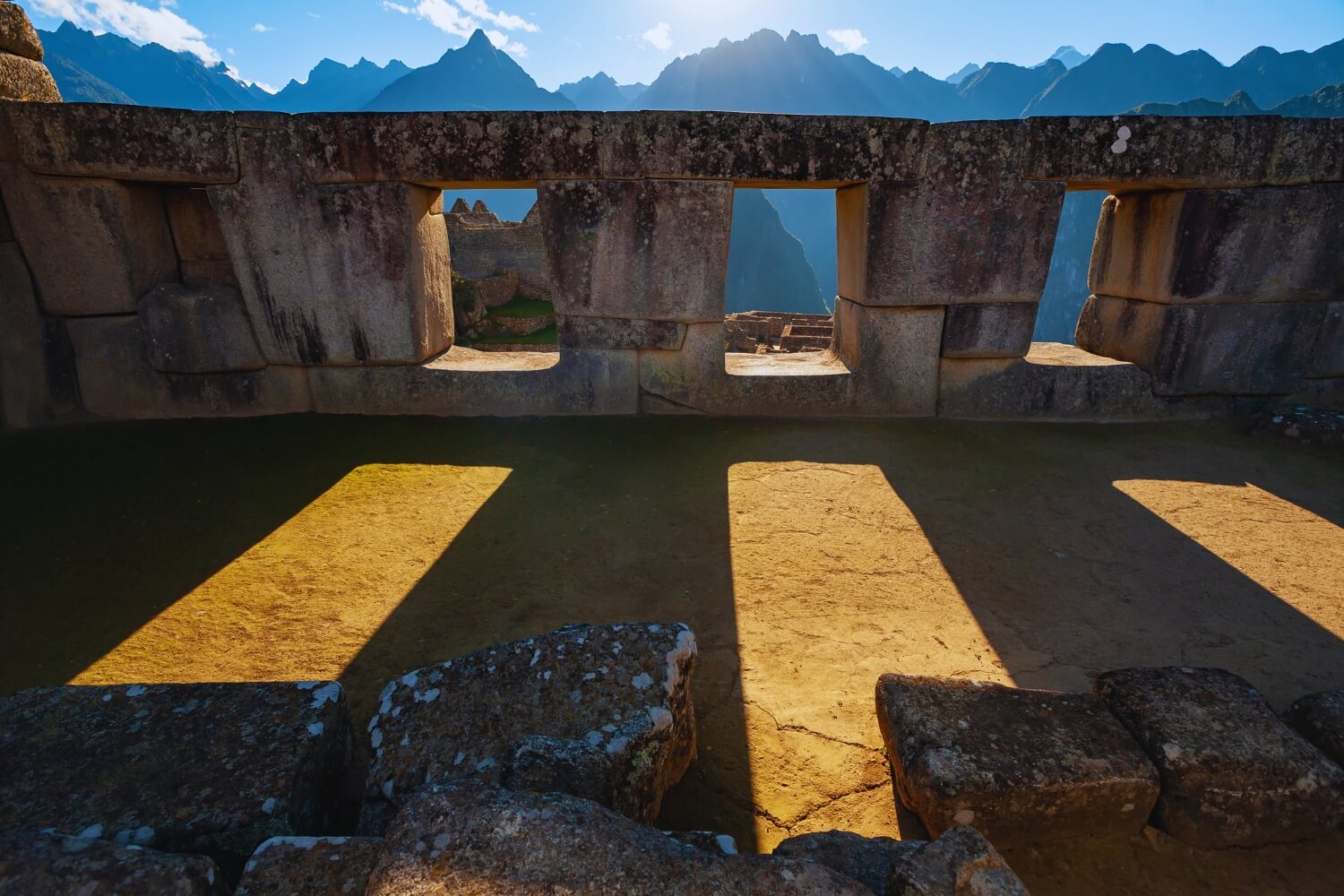
June is the beginning of the high tourist season in Peru. For this reason, the long lines to board the buses and to enter Machu Picchu are visible. Pre-booking your citadel tickets, as well as bus and train tickets, will be crucial. Also, while the rest of the world, including the Peruvian coast, feels winter, Machu Picchu experiences cool weather with warm days, occasional light rain, clear skies, and picture-perfect views of the mountains. Not to mention the amazing views of the Milky Way at night. The temperature in June tends to drop and stays between 44 and 83ºF. However, it can drop as low as 32ºF before sunrises and after sunsets, making for the coldest nights of the year. Trails like the Inca Trail, or Salkantay among others, are even more popular with tourists.
In addition, several festivals occur during this time, including the Winter Solstice and the Cusco Anniversary, which means that almost all tourist attractions will be packed with thousands of people. If you plan to complete one of the treks to Machu Picchu, you will need to book it well in advance, as permits can be hard to come by.
However, it is important to note that these months are also the busiest to visit Machu Picchu, which means longer lines, busier buses and trains, and busier trails. This can make it difficult to obtain permits for popular treks like the Inca Trail, and it’s important to book accommodation and tours well in advance.
Despite the crowds, visiting Machu Picchu during the high season has its benefits. With clear skies and dry conditions, you’ll enjoy stunning panoramic views of the surrounding mountains and landscapes, and the site itself is more photogenic. In addition, the high season offers the longest schedule of buses and trains to and from Machu Picchu, which makes transportation more convenient.
In short, visiting Machu Picchu during the high season of June offers ideal weather conditions and beautiful views, but it also means more crowds and higher prices.
Average high temperature: 25°C (77°F)
Average minimum temperature: 9 °C (48.2 °F)
Average Precipitation: 17mm (0.7″)
Average rainy days: 2
Average daylight: 11.4h
average sun: 8h
Average UV Index: 10
Average humidity: 54%
Machu Picchu in July is a busy time where thousands of tourists flock to the mountaintop citadel to take advantage of the pleasant weather conditions and experience the amazingly clear view of the mountains. Temperatures during July are cooler and rainfall is considerably lower than at other times of the year. While all tourist sites and modes of travel will be extremely busy during July, they will be even busier during the holidays (July 27 and 28) that mark Peru’s Independence Day.
In general, the temperature of the Peruvian highlands tends to drop below freezing point. It is due to where Machu Picchu is located. In July, Machu Picchu presents the coldest weather, with an average temperature of 44º – 82ºF. The temperature at night can drop below freezing and reach 70ºF at noon. An extreme contrast on the same day! Therefore, the visitor has to be prepared with warm and waterproof clothing. The queues to board the CONSETTUR buses and enter Machu Picchu reach their maximum length. In addition, the cost of any tourist service increases its value. In other words, you will see a large influx of tourists in almost all Peruvian attractions this month.
Average maximum temperature: 26 °C (78.8 °F)
Average minimum temperature: 11 °C (51.8 °F)
Average precipitation: 8 mm
Average rainy days: 7
Average daylight: 12h
Average sun: 7h
Average UV Index: 12
Average humidity: 52%

It is the peak of the dry season. The temperatures are also warm, so it is a good time to visit Machu Picchu. The trek to Machu Picchu in August is a popular holiday for tourists from the northern hemisphere, and as such, the trails and tourist sites will continue to be crowded. As with many of the winter months, you may have better luck trying to book Salkantay or Lares Treks, as permits for the Inca Trail will still sell out early. As for the weather, temperatures will be very cold at night, while daytime temperatures will be moderately warm.
The high influx of tourists and the cold continue. An average temperature of 42 to 78ºF. In the same way, the temperature can also drop below freezing point. And in the middle of the day, temperatures reach 70º F. August also sees long lines and tourists at almost all of Cusco’s attractions, plus Machu Picchu.
Average maximum temperature: 26 °C (78.8 °F)
Average low temperature: 11 °C (51.8 °F)
Average precipitation: 10 mm
Average rainy days: 7
Average daylight: 12h
Average sunshine: 7h
Average UV Index: 12
Average humidity: 52%
September is a good time to visit Machu Picchu, as the volume of tourists will start to dwindle a bit as the peak hiking season winds down. Although there will be fewer visitors to Machu Picchu, permits for the trails can still be difficult to come by. During September, you’ll still be able to take advantage of cooler, drier weather; however, some of the first rains will occur throughout the month. As a result, you’ll have more opportunities to explore the ruins without large crowds. September is also a good time to visit if you are interested in seeing the Inca Trail.
September practically marks the end of the dry season at Machu Picchu, however it is a good time to visit as the weather is mild and pleasant, with fewer crowds compared to the high season. It is the end of the rainy season, and there is less rainfall. The temperatures are also warm, so it is a good time to visit Machu Picchu. September is an ideal month to visit Machu Picchu. The climate is temperate, with average temperatures ranging from the mid 60F to the high 80F. Although there may be some showers, they are generally short and do not interfere with tourism.
Average maximum temperature: 26 °C (78.8 °F)
Average minimum temperature: 11 °C (51.8 °F)
Average Precipitation: 44mm (1.7″)
Average rainy days: 7
Average daylight: 12h
Average sunshine: 7h
Average UV Index: 12
Average humidity: 53%
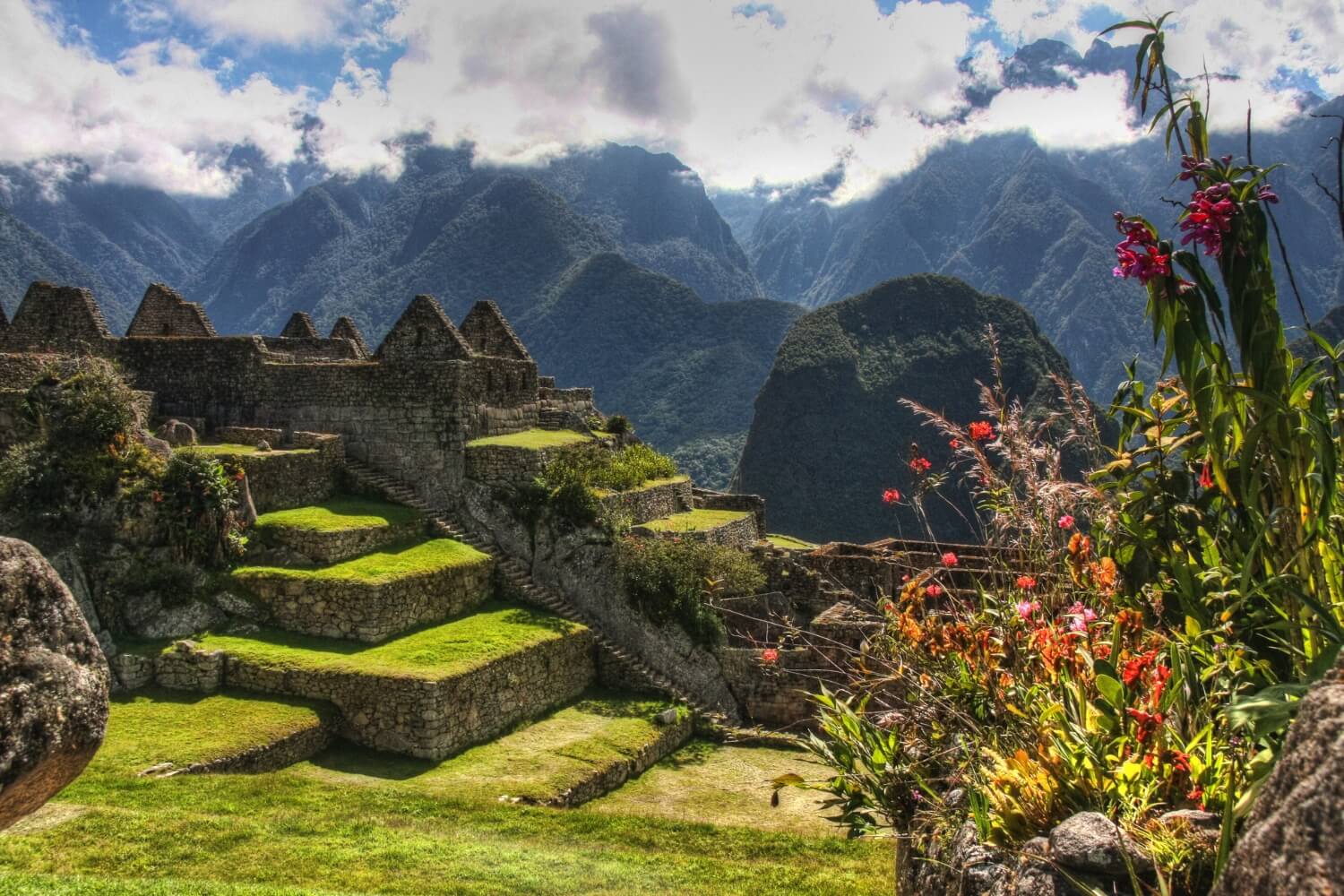
October marks the end of the dry season at Machu Picchu, however despite the increased chance of rain there are still plenty of clear days and you can still enjoy stunning views of the surrounding landscapes, it is one of the best times to visit. Macchu Picchu. Whether you plan to climb the mountain or visit it en route, you’ll find that the number of tourists has dropped dramatically, allowing you to enjoy this magical place in solitude. Temperatures throughout the month are ideal for hiking, making this one of the best times to experience the Inca Trail to Machu Picchu.
During the day, temperatures can range from 60°F to 70°F Fahrenheit (around 20°C), and at night, temperatures can drop to as low as 40°F to 50°F (around 7 at 10°C). One of the perks of visiting Machu Picchu in October is the chance to see the surrounding landscapes in bloom. The rainy season brings lush vegetation and blooming flowers, which can add an extra touch of beauty to the already impressive landscape.
Average maximum temperature: 26 °C (78.8 °F)
Average minimum temperature: 11 °C (51.8 °F)
Average Precipitation: 44mm (1.7″)
Average rainy days: 7
Average daylight: 12h
Average sunshine: 7h
Average UV Index: 12
Average humidity: 56%
If you don’t mind a little rain, visiting Machu Picchu in November is the perfect time of year to escape the crowds. During this time, you will find that the tourist sites will be much less populated, allowing you to experience the stunning views of the Andes Mountains at your own pace. Trail conditions along main routes will remain good; however, you can expect to get a little wet on your trip up the mountain. Temperatures will also be a bit warmer during November.
You can expect less crowds compared to the high season (June to August). However, Machu Picchu is a very popular tourist destination, so there will continue to be a significant number of visitors. To avoid the crowds, try to visit early in the morning or later in the afternoon. In November, Machu Picchu lives its spring season. This means that the weather is mild and comfortable during the day, with average temperatures ranging from 50°F to 73°F (10°C to 23°C). However, it can get quite chilly in the morning and at night, so be sure to bring layers.
It is important to pack appropriate rain gear such as a waterproof jacket, pants, and shoes to keep you dry during your visit. Even if it’s not raining, clouds and mist can create a humid environment, so it’s a good idea to bring layers to keep warm. While the rain can be a bit annoying, it can also add to the mystical atmosphere of Machu Picchu and create beautiful photo opportunities. Just get ready and enjoy the experience!
Average maximum temperature: 26 °C (78.8 °F)
Average minimum temperature: 13 °C (55.4 °F)
Average Precipitation: 86mm (3.4″)
Average rainy days: 9
Average daylight: 12.7h
Average sunshine: 7h
Average UV Index: 12
Average humidity: 57%
Visiting Machu Picchu in December is one of the least crowded times of the year for tourists, mainly due to the increase in rainfall and the fact that there are few clear and sunny days during the month. The conditions are really not that good for trekking; however, it may still be worth visiting the Inca city by train from Cusco if you can get halfway decent weather.
December is the beginning of the rainy season at Machu Picchu. December receives around 13 rainy days, with an average rainfall of 121mm (4.8″). As for temperatures, December is still part of Machu Picchu’s summer season, with average temperatures ranging from 12°C to 24°C (54°F to 75°F) during the day. However, temperatures can drop significantly at night, especially if it rains, so it’s important to bring warm layers as well.
Crowds in December can vary depending on the specific dates of your visit. The Christmas and New Year holidays can be a popular time to travel, so you may experience large crowds during that time. In general, though, December is still considered a shoulder season, so you may experience fewer crowds compared to the peak season of June through August.
Average maximum temperature: 26 °C (78.8 °F)
Average minimum temperature: 13 °C (55.4 °F)
Average Precipitation: 121mm (4.8″)
Average rainy days: 13 days
Average daylight: 12.9h
average sun: 6h
Average UV Index: 12
Average humidity: 62%
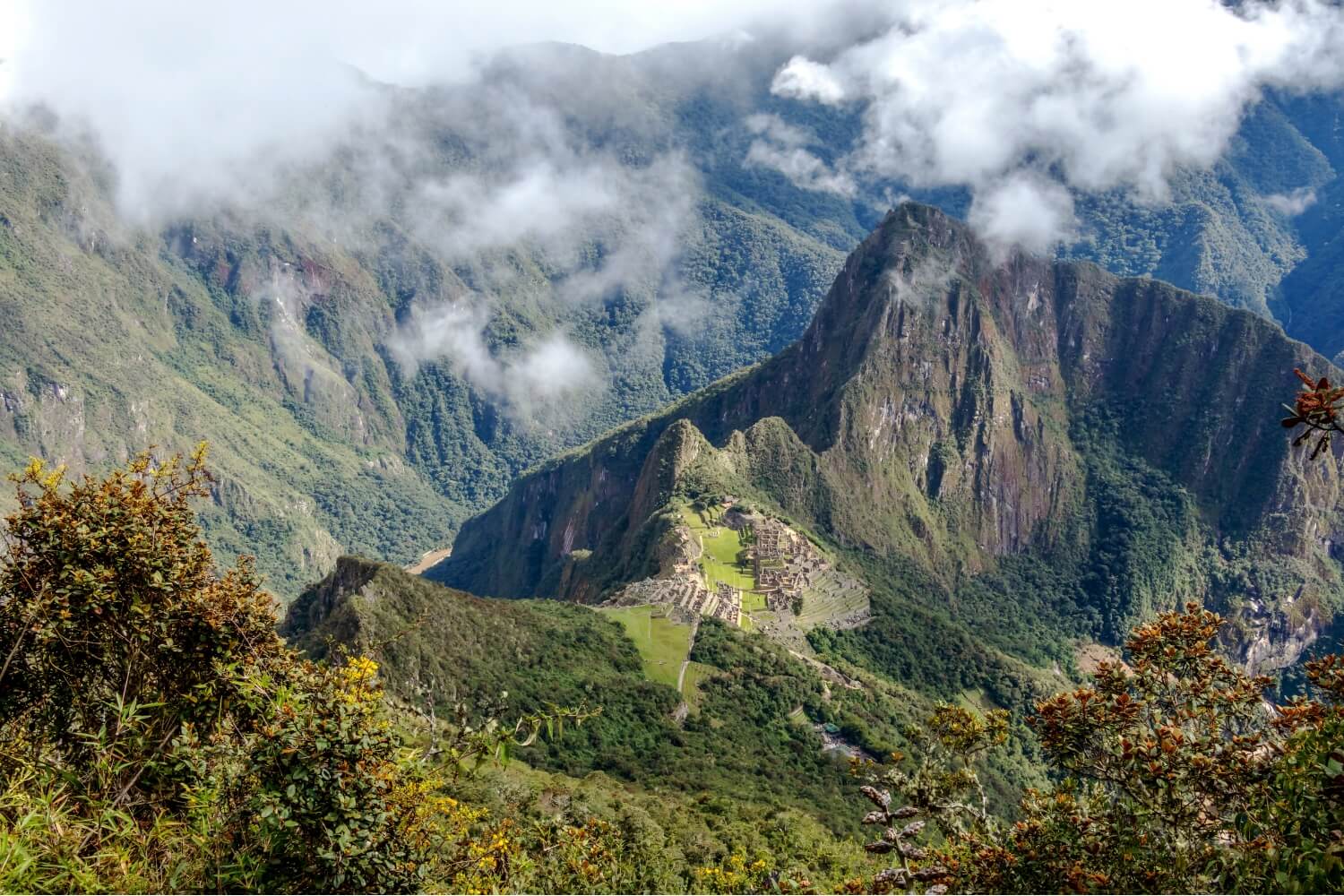
When considering Machu Picchu best time to visit. Most people recommend catching the awe-inspiring sights at sunrise 6 am in the morning, or Sunset at 5 pm. Both times provide incredible opportunities for unique photos and more chances to appreciate the ancient Inca ruins in serenity and peace. The early mornings can be used to capture beautiful sunrises with few people in the citadel (in the dry and medium seasons of course) From 06:00 am to 10:00 am. In addition, Aguas Calientes, a town located at the foot of the Machu Picchu mountain, is a bus port that departs every 5 minutes to Machu Picchu, the first one leaves at 05:30 a.m., and the last one returns at 5:30 p.m. . Another great time to visit Machu Picchu is in the afternoon. Most people visit the Inca citadel until 2:00 pm, after this time they start going down to Aguas Calientes for lunch, which means fewer people in the Inca citadel after that time. Therefore, visiting Machu Picchu from 2:00 p.m. until the Citadel closes at 5:30 p.m. is another great recommendation for you.
Taking into account the dry season, from April to October (high peak of tourism), there are some days that bring crowds and long lines to the Inca citadel. Holy Week: It is usually the last week of March or the first days of April. Most of the Peruvian population is Roman Catholic, so they take advantage of Holy Week to visit Machu Picchu.
Summer holidays: From the first half of May to the beginning of September. Most jobs in America and Europe set vacations for their workers in the summer.
Peru Independence Day: July 27, 28, 29 and 30. Actually, July 28 is Peru’s independence day. But the government usually decrees vacations two days before and two days after that date. So, you can find a crowd of local visitors in the citadel.
New Year’s Eve parties: We can include Christmas. From December 24 to January 2 of the next year. There are plenty of reasons to visit Machu Picchu on these dates.
WHAT TIME DOES THE MACHU PICCHU ARCHAEOLOGICAL PARK OPEN AND CLOSE?
The Machu Picchu Archaeological Park is open from 06:00 am to 17:30 pm.
IS MACHU PICCHU CLOSED DURING THE YEAR?
Among the data of Machu Picchu, one of the most important is that it is open every day of the year. Except in exceptional cases such as protests or social mobilizations or natural disasters.
WHEN IS THE BUSINESS TIME IN MACHU PICCHU?
Winter in the Peruvian highlands coincides with summer in the northern hemisphere (mid-year vacation for Americans, Canadians, and Europeans). Therefore, June, July and August are the busiest months of the year in Machu Picchu. Despite having clear skies and bright sunshine, you will find cold weather and a lot of people in and around the citadel of Machu Picchu.
WHEN IS THE COLDEST MONTH TO TRAVEL TO MACHU PICCHU?
Similarly, during the months of June, July and August the nights are colder. At noon, you will feel the cool weather. In this sense, we can consider these months as the coldest of the year.
HOW MANY DAYS DO YOU NEED TO VISIT MACHU PICCHU?
We recommend spending at least 7-9 days in Peru visiting Machu Picchu and the surrounding Inca ruins, with time to explore Cusco before or after. You can extend your trip by traveling a little further to see the Peruvian Amazon River on a cruise. Other options include Lake Titicaca or the Colca Valley if you take extra travel time.
TEMPERATURES IN MACHU PICCHU
Located at 8,000 feet (2,440 meters), you’ll be surprised to learn that Machu Picchu’s temperatures are relatively mild year-round. Temperatures range from 50 to 80 degrees Fahrenheit (10 to 27 degrees Celsius) year-round on average, with only a few degrees difference between midsummer and midwinter. With the high altitude of Machu Picchu, you can expect the weather to change unexpectedly, so always be prepared for rain and shine.
WHAT IS THE WARMEST MONTH TO VISIT MACHU PICCHU?
The warmest month in Machu Picchu is December when the average temperature is 21°C. January and February are also warm months, with average temperatures of 20°C. The rainy season runs from November to March, so if you want to avoid the rain, it’s best to visit during the dry season.
BEST TIME TO VISIT MACHU PICCHU AND GALAPAGOS
Visiting Machu Picchu and the Galapagos Islands is a once-in-a-lifetime experience for many travelers, and understanding the best time to visit can make all the difference. It is best to plan your trip for the months of April or October, especially if you plan to do heavy sightseeing.
Weather conditions are more pleasant during these months, and fewer tourists crowd the popular attractions. For wildlife enthusiasts looking to explore the Galapagos, you’ll also want to plan your trip around the rainy season, from December to June, as wildlife sightings can be best during this period. With careful planning, you can ensure top-notch viewing experiences!
BE SURE TO PACK APPROPRIATE CLOTHING FOR THE TIME OF YEAR YOU WILL BE VISITING
No matter what time of year is the best time to travel to Machu Picchu, it is important to pack properly. If you are traveling during the rainy season, be sure to bring a rain jacket and waterproof shoes. If you are visiting during the winter months, please bring a warm coat, hat, and gloves.
And if you go during the summer, be sure to pack sunscreen, a hat, and sunglasses. With the right clothing, you’ll be prepared for whatever the weather throws at you! Consider reading Peru’s detailed packing list for months
If you plan to visit Machu Picchu during the dry season, it is necessary to book your tickets and hotels in advance. This is the busiest time of year for tourism, so you’ll want to make sure you have a secured spot. Machu Picchu is a historic site located in the Andes mountains, and there is a lot of hiking and climbing involved. The site is quite steep in places so be prepared for a challenging walk. You will also need to be trained for altitude, as Aguas Calientes is more than 2,400 meters above sea level. Drink plenty of water and take it easy on your first day if you are not used to the altitude.
BEST TIME TO DO THE INCA TRAIL TO MACHU PICCHU
The Inca Trail is the most iconic and popular trekking route to reach Machu Picchu, which results in the need to book it well in advance to obtain a permit. There are 500 permits that can be issued per day during peak season and many are secured by guides who take people up the mountain, meaning competition for them is high. If you are looking for the best overall time to do the Cam
BEST TIME TO DO THE SALKANTAY TREK
The Salkantay Trek is another amazing route for people looking to reach the summit of Machu Picchu, and while it is less popular than the famous Inca Trail, it is just as beautiful and slightly easier to secure a permit; however, just because it is less popular than the Inca Trail doesn’t mean that it won’t be busy. If you would like to avoid the crowds and still enjoy some decent weather, then the best time to do the Salkantay Trek is during the shoulder seasons of April-May and October-November.
BEST TIME TO DO THE LARES TREK
As with the Salkantay Trek above, the Lares Trek is another authentic route that will provide a similar experience to the Inca Trail, in that it takes you through the mountains to Machu Picchu with a bit less of a fuss surrounding securing a permit. Once again, the best time to do the Lares Trek will be in the April-May and October-November windows in order to enjoy great weather and avoid the crowds.
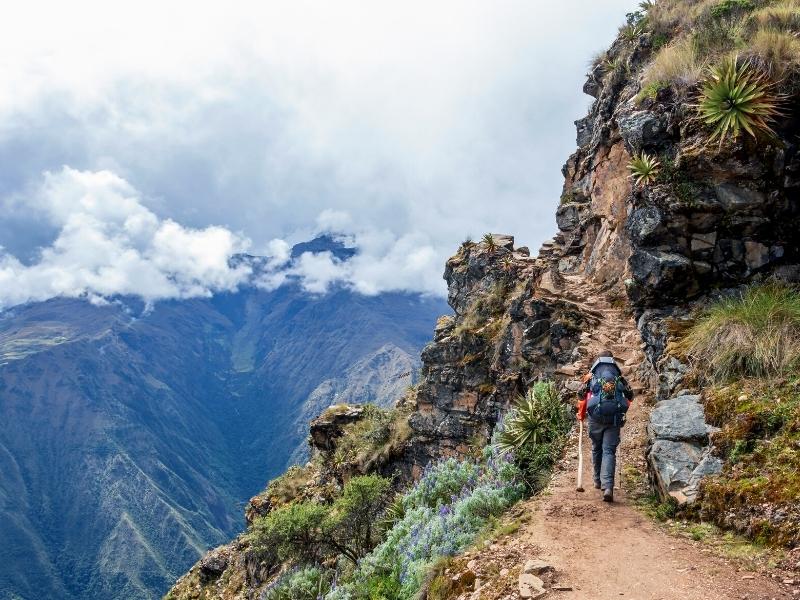
Visit the two jewels of Inca architecture, the sacred sanctuary of Choquequirao is built on a mountain above the great canyon of the Apurimac River, then you will visit the modern wonder of Machu Picchu together with our guides who are passionate about the history and culture of Peru.
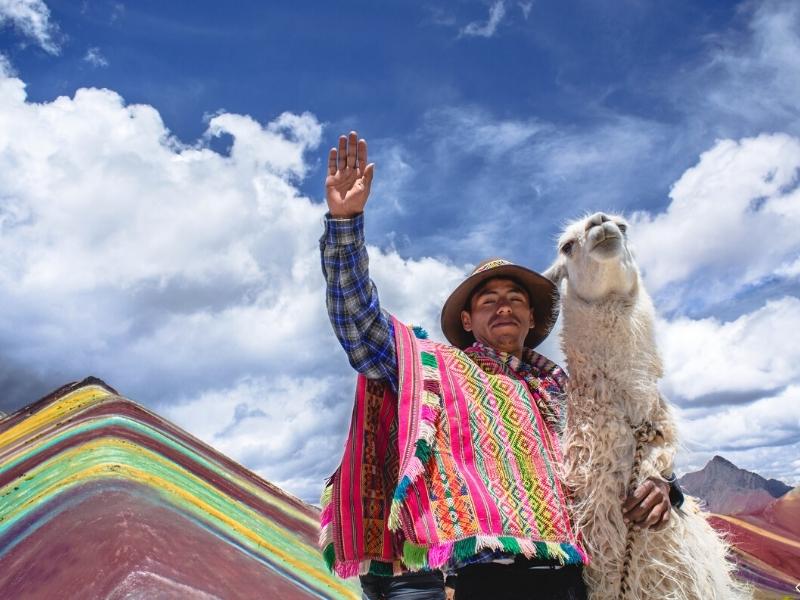
The Ausangate Trek is renowned for its otherworldly natural scenery. It’s considered by many to be one of the world’s best high-altitude treks, the trek takes hikers over several high passes, into low alpine valleys, and through traditional Peruvian villages.
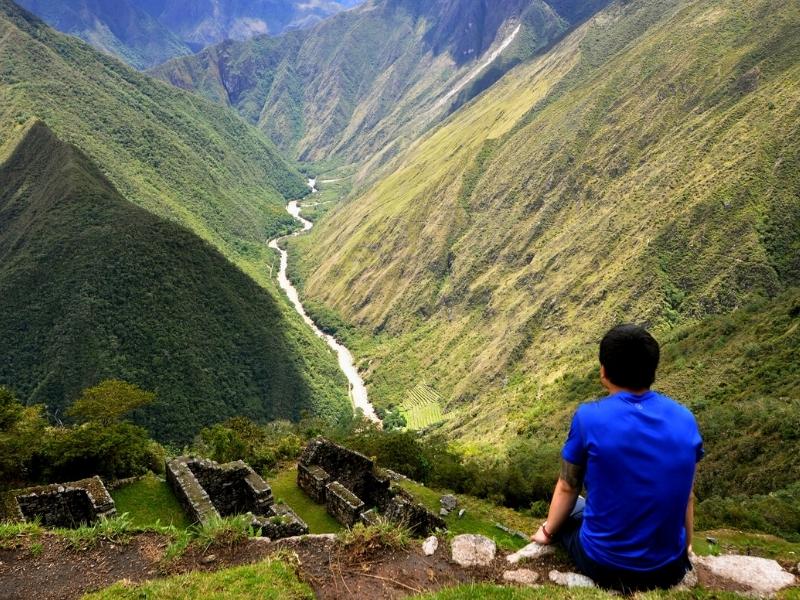
Explore the Manu Amazon Rainforest & Inca Trail hike to Machu Picchu, you will enjoy the best adventures in Peru, exploring amazing inca trail routes and the best amazon wildlife with our local tour guides, in small groups.

Peru was inhabited by the greatest civilizations in South America, such as the Chachapoyas and Incas. Those who have built the best engineering works, on large areas of the beautiful landscape of the Andes, and the jungle. This tour will take you to the most remote regions of Peru, where you can learn about its extraordinary traditions and rich history.


Enjoy an incredible vacation, in the heart of the Inca empire, Cusco, our travel program will take you to the most famous tourist attractions of Cusco, such as the Sacred Valley of the Incas, Machu Picchu, in very cozy hotels.

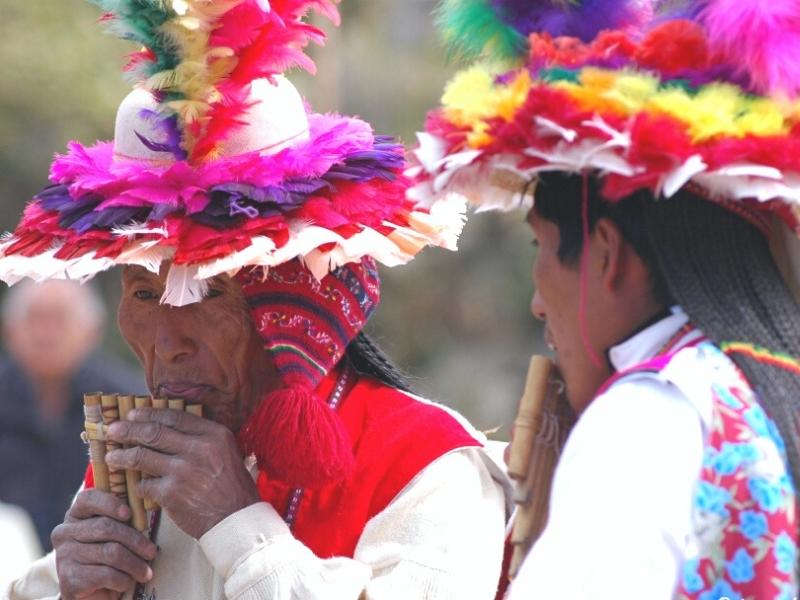
Sublime landscapes, wildlife, history, culture - Peru has more than its fair share. Its famed snow-capped Andean peaks shelter the temples and fortresses of the Inca and other pre-Columbian cultures, linked by a network of paved trails.
